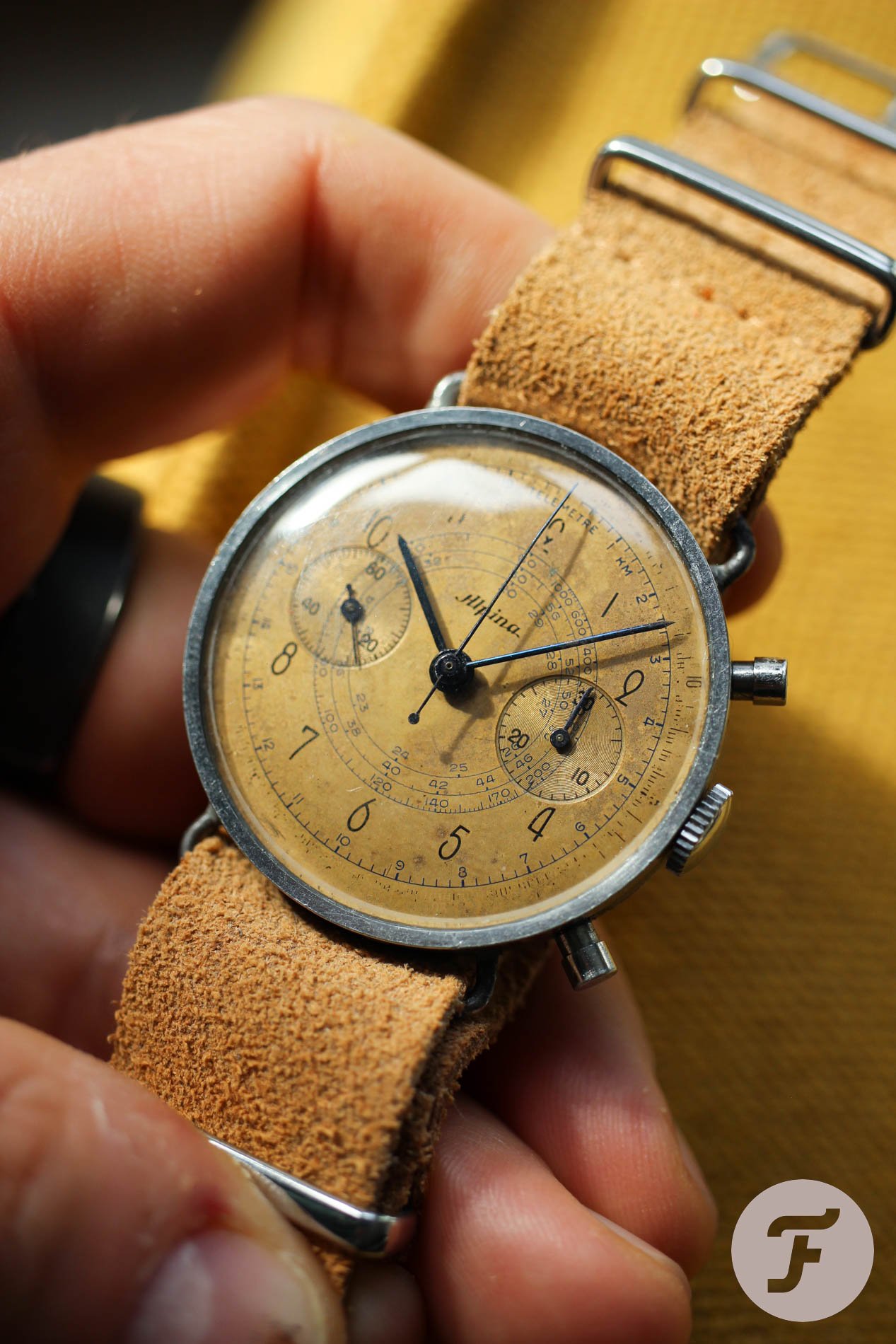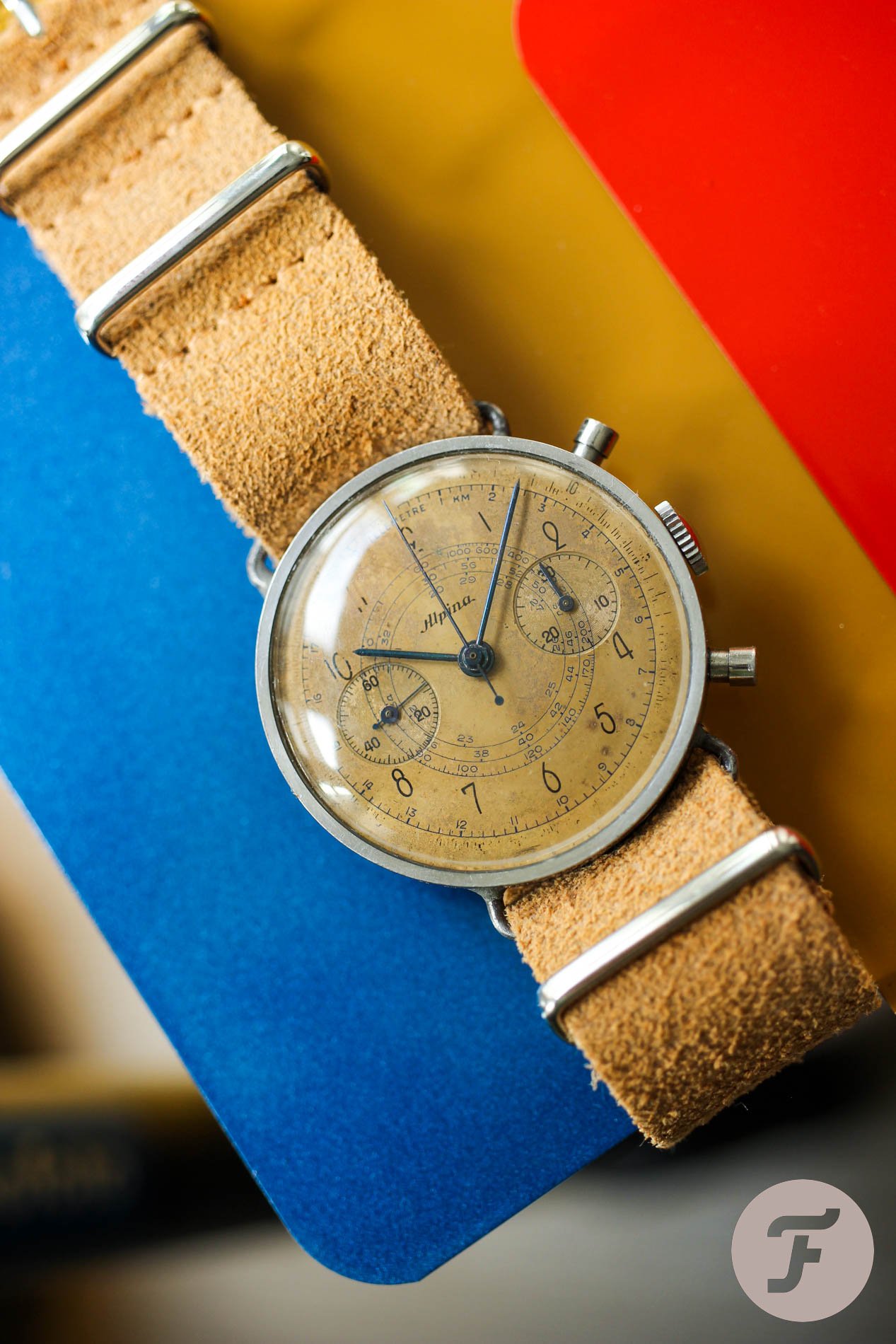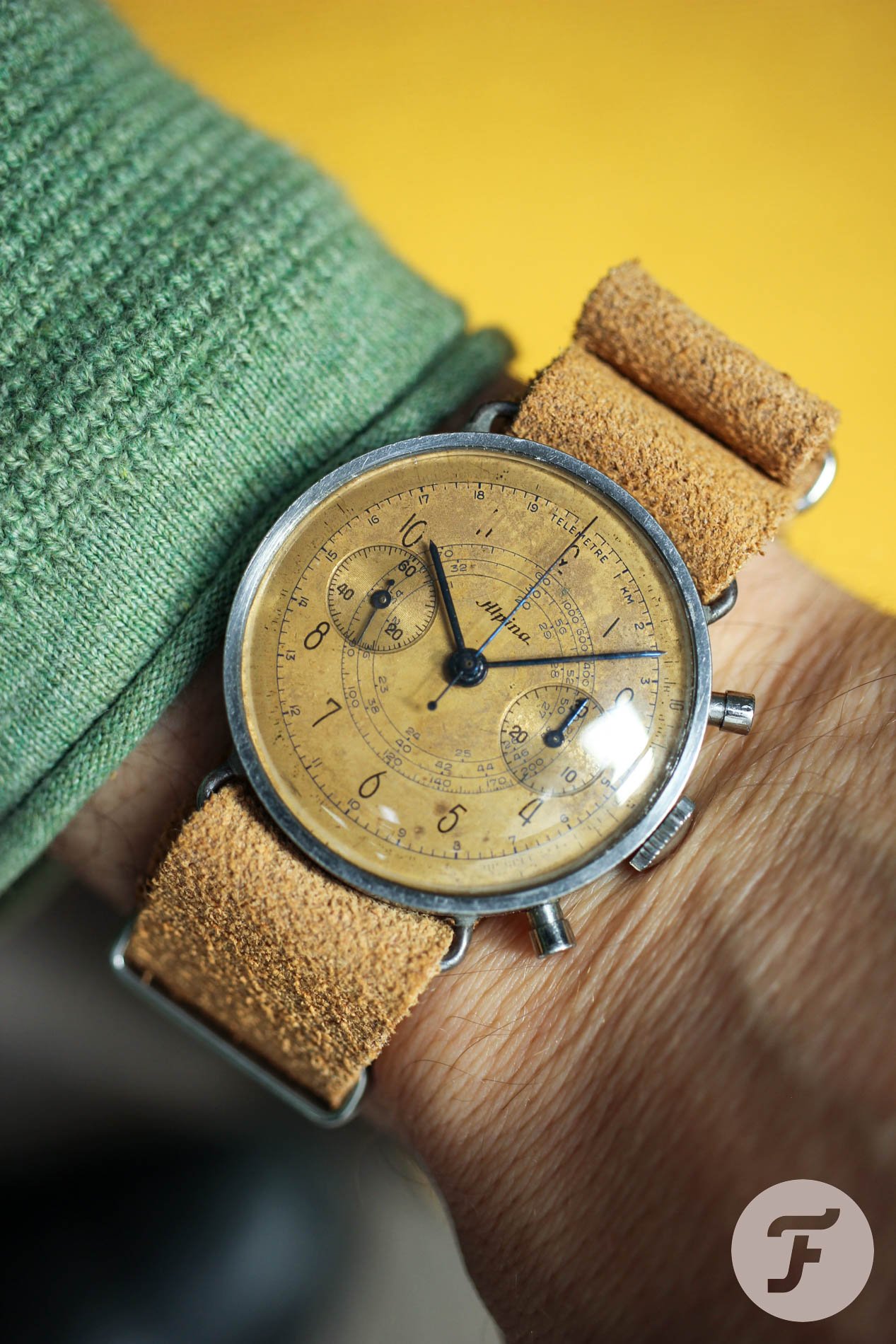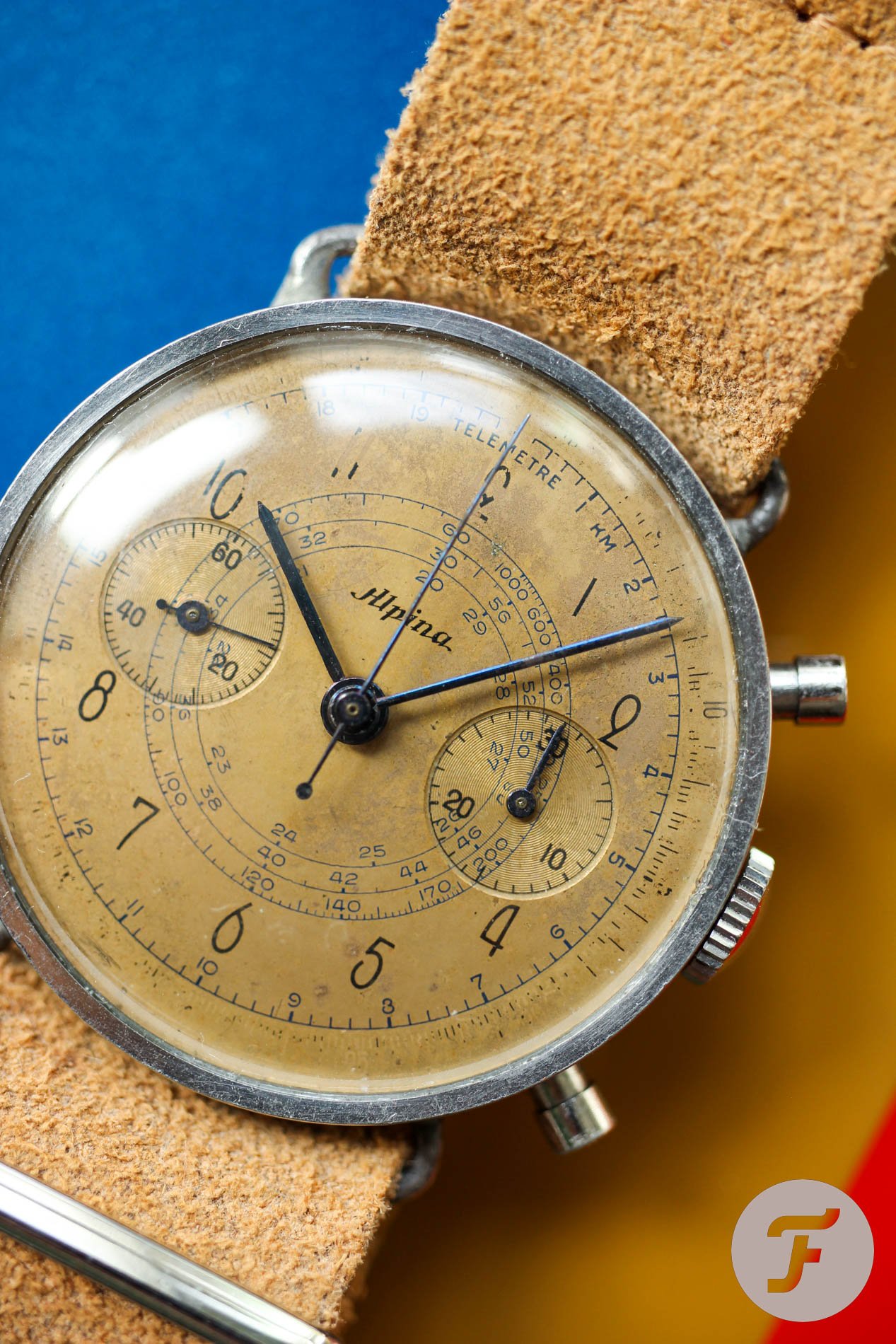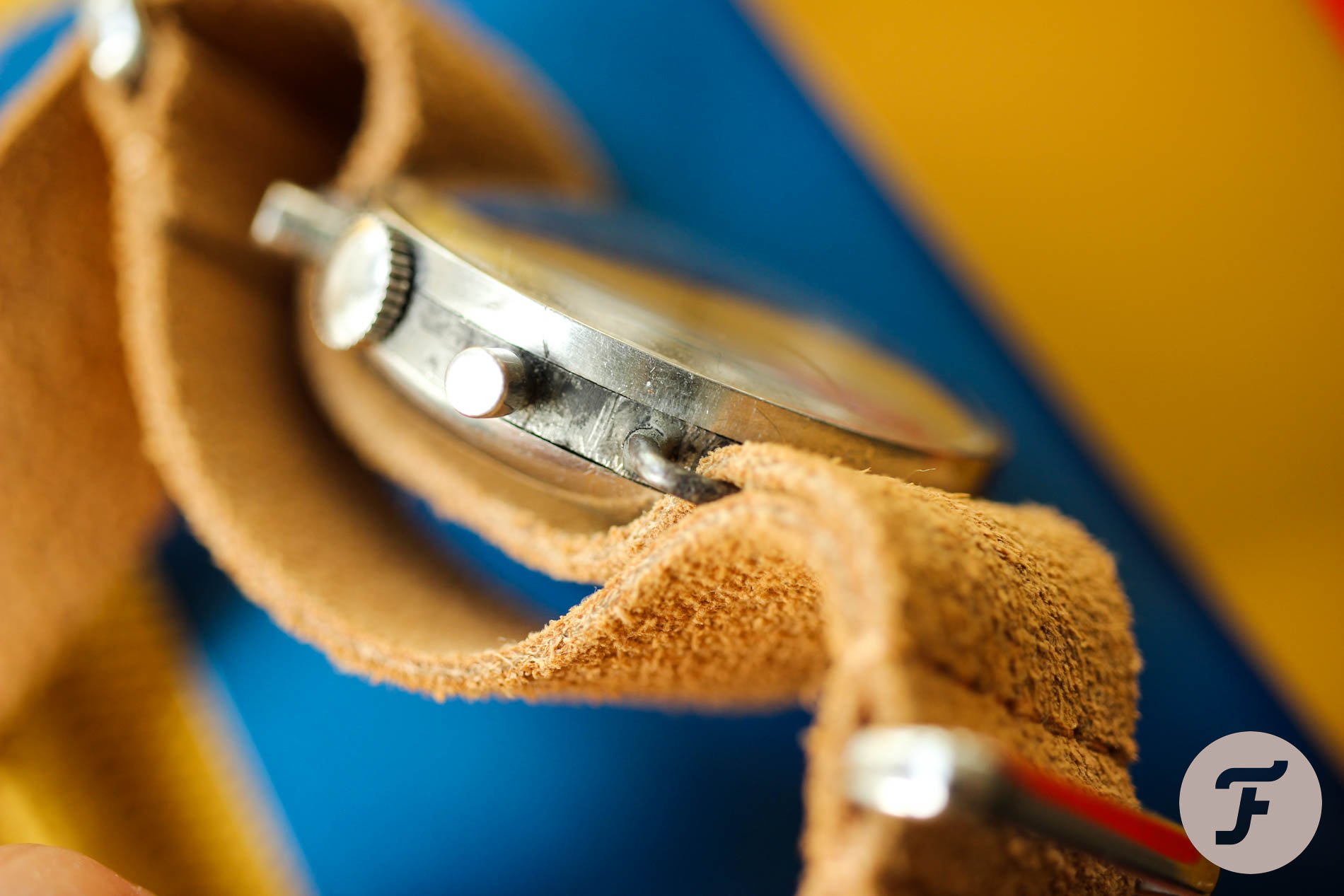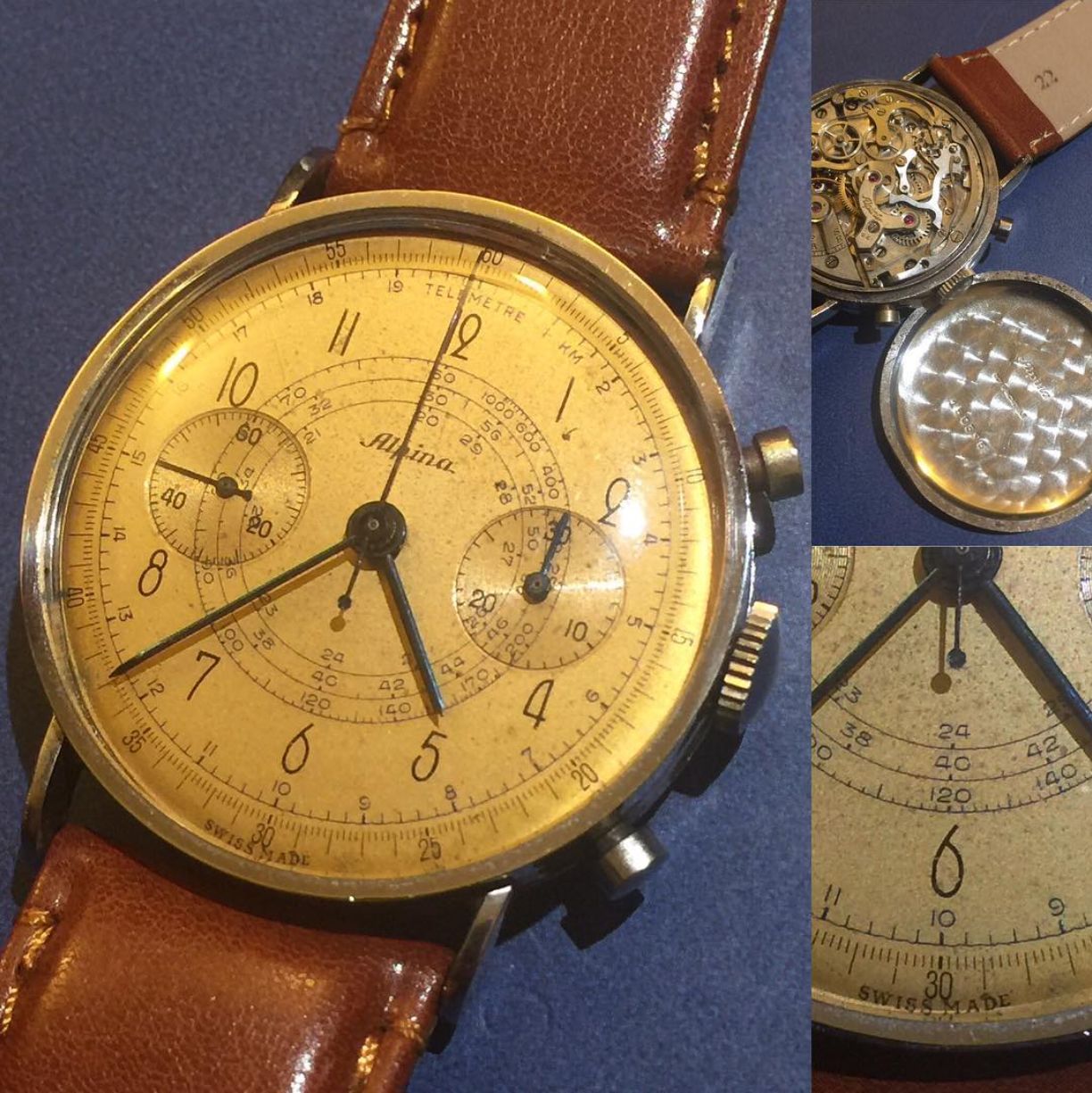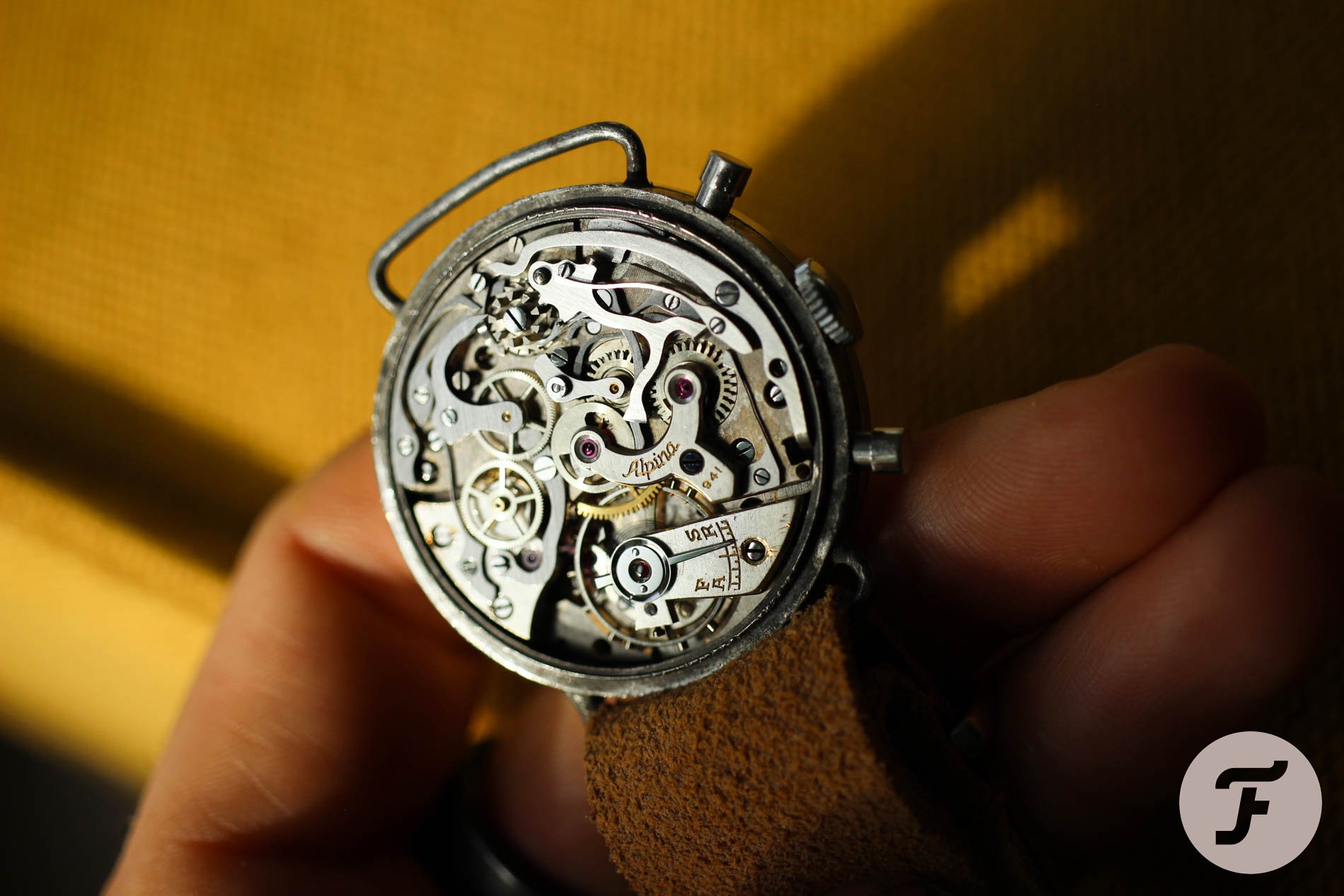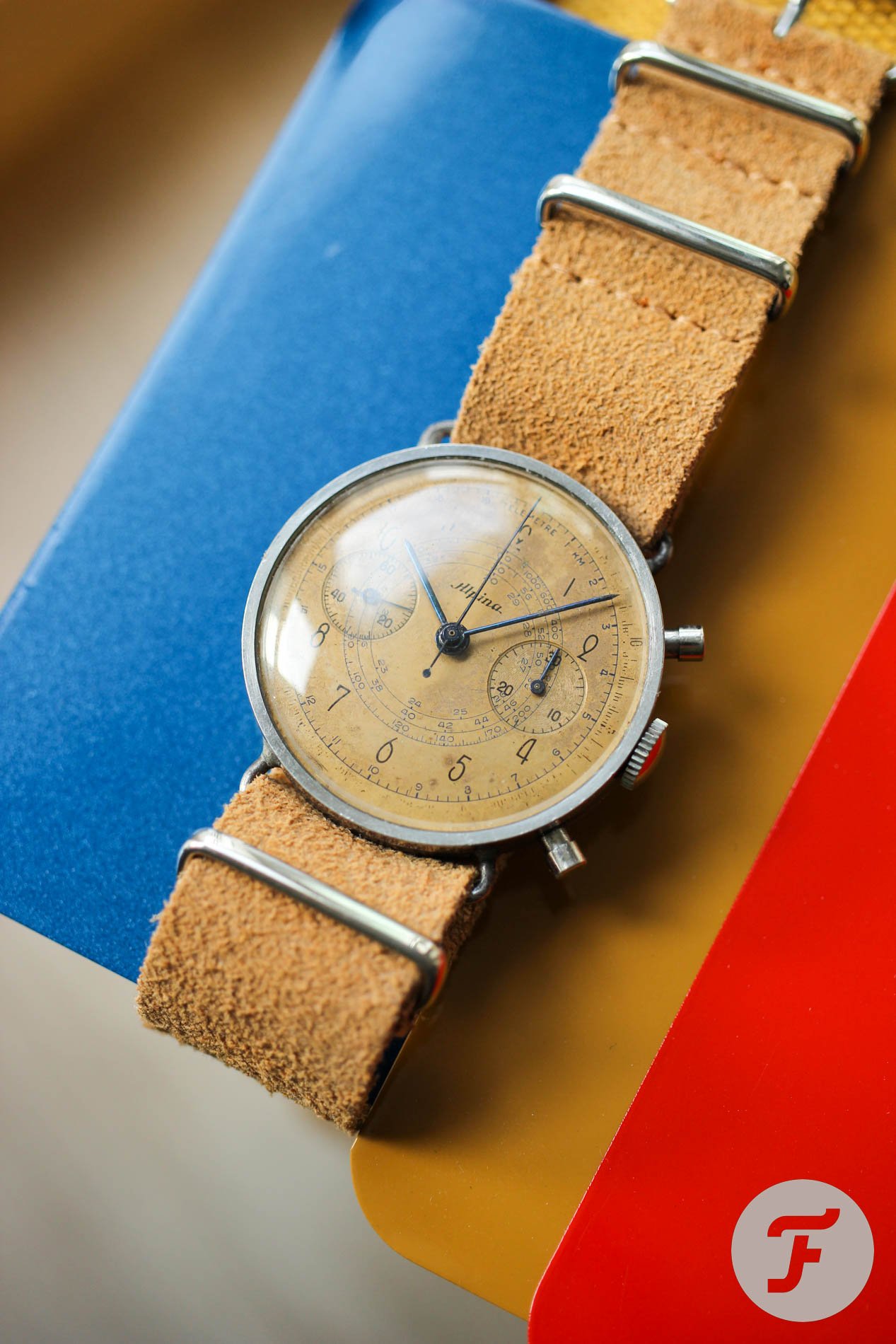#TBT A Second Chance For An Injured Alpina 941
It had a crown instead of a pusher cap. It even has new wire lugs welded on. Not many watchmakers would be excited to service such a watch, but I felt this Alpina 941 deserved to be reborn.
First of all, there are not many collectors who would jump on such a severely wounded watch. After all, buying such a watch is like buying a highly damaged classic car. It looks lovely at first because it’s often cheap and all original. But once you proceed with the restoration, you realize you will spend way more bringing it back to life than purchasing an already restored piece. So why couldn’t I resist it, despite acknowledging all of the above?
Alpina soft spot
I have a soft spot for vintage Alpina watches from an era long gone. I no longer invest in Alpina chronographs, but I still have alerts set on all the auction sites. While there are many time-only watches, it is difficult to bump into early Alpina chronographs. I was lucky once with the Alpina 943, which came in fantastic condition.
Maybe a year ago, I got an eBay alert on a newly listed Alpina chrono. I liked the dial style and was sure that all the hands and crown were original to the watch. The minute track around the edge of the dial was almost gone, but the dial maintained its integrity thanks to the almost intact outer telemeter track. I was on vacation at the time, and without much thinking, I pulled the trigger…
First impressions of the Alpina 941
When it arrived, I inspected it briefly. The movement seemed to be in good condition. Taking off the yellowed Plexiglass crystal is one of our hobby’s most anticipated and enjoyable moments. I guess you all know what I am talking about. To uncover a beautiful dial under a scratched Plexi is like discovering real treasure.
I guess that the lifestyle of most collectors doesn’t allow them to beat watches so much to develop such a “patina” on crystals. Not to mention sapphire, which ruins most of the efforts to damage it. When I took the original Plexi crystal off of the Alpina 941, there wasn’t a perfect beauty hiding underneath it, but it wasn’t bad. It never ceases to fascinate me how a white or silver dial can turn into old parchment.
Straight to the spa
I kept the watch for a few minutes and didn’t even try it on. Within the next hour, I took it to my watchmaker, to whom I’d only given a light description of what was coming in. I knew that finding a replacement pusher wouldn’t be easy. It’s the kind of job that you need to be in the right mood to tackle. Well, I almost forgot that I gave the watch to my watchmaker.
And I am writing this piece today because it’s been just a few days since he called me to say the watch was ready. It took almost a year, but here we are! This Alpina 941 has come back to life.
High class
I believe I don’t need to praise the dial design much. The blued stick hands are a masterpiece of simplicity, beauty, functionality, and elegance. The dial background elaborates the story of grace with the unusual font for hours, all printed in black. I wanted to point out one or two numbers, but they are all equally beautiful and interesting.
The black font of the sub-registers and the iconic black Alpina logo are balanced with two significant elements in blue, the telemeter and tachymeter “snail” track. The distance between each and the harmonic distribution of black and blue tones gives the watch outstanding balance and timelessness. The thin “mushroom-style” crown doesn’t need any engravings, stamping, or other decoration to be perfect. It embraces the case so perfectly that you feel it will never fall off its designed position.
The mystery of the lugs
Looking closely at the side of the case, you can see that my Alpina 941 has unusual wire lugs. Well, they’re unusual for Alpina, at least. If you look at other Alpina 941 chronographs, you will always find sharp, thin lugs that fit nicely to the thin case sides. What happened to the original lugs on mine? We will never know. Did the owner run into something and had to have them replaced? Or was he using the watch in particular conditions that required fixed lugs and a safer strap setup? This mystery fuels constant wonder about the watch’s history and makes this piece charming.
Finding an Alpina 941 twin
Vintage Alpina enthusiast and researcher Bas dove into 941 chronographs, and on his blog, he features an identical piece. Besides the “updated” lugs, both watches are 100% twins, down to every single hand, crown, and track. Bas even archived its serial number. It’s kind of magical to find two watches that are almost 100 years old in different corners of the world with serial numbers so close to each other. One featured on Bas’s blog is stamped 150395, and mine is 150407 — just 11 watches between them. If you allow me to daydream, there should be at least 11 other examples like this one. Maybe they are all long gone. Or perhaps they survived and are sitting in people’s drawers, waiting to be discovered…
Valjoux 23 vs. Valjoux 22
While the Alpina 943 uses the Valjoux 23 as its base, the Alpina 941 is based on the Valjoux 22. They show many similarities but not all parts are interchangeable. “The Valjoux 22 is reasonably bigger. Its mounting diameter is 31.3mm, compared to 29.5mm for Valjoux 23. Finally, a hint: if the edges of the balance cock are curved, the movement is related to the Valjoux 23; if they are straight, it’s related to the Valjoux 22,” explains Dr. Roland Ranfft, a well-known movement researcher.
Last thoughts on the Alpina 941
My Alpina 941 is light-years away from desirable condition for many collectors. The dial is pretty eaten (chewed up, at least), the original lugs were amputated, and the pushers have been refreshed. But if not for my watchmaker, it would be dead. And thanks to its nicely aged dial, rough wire lugs, and mysterious history, this watch has a strong charm for me. Now that my watchmaker serviced it fully and paired it with a thin and soft leather NATO strap, the watch is ready to discover what has changed in the decades that it was off duty. Happy hunting.

